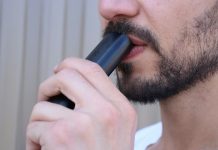You’ve no doubt heard the term “sleep apnea” but may not be clear on exactly what this health condition is and how it works, ways to prevent and treat it, and so on. Sleep apnea is the name for a sleep disorder that can have serious consequences.

People with sleep apnea have breathing that repeatedly stops and starts when they rest. Read on for the lowdown that you need to know today.
Types of Sleep Apnea
Sleep apnea can come on in one of three main types. There is obstructive sleep apnea, which is the most common style. This occurs when the muscles in your throat relax too much, or something blocks the airway (trachea) that brings air into your body. This airway can be blocked by your tonsils, uvula, tongue, or even a lot of fatty tissue in your throat.
Another type of sleep apnea is central sleep apnea. Less common, this condition relates to the function of the central nervous system and means that your brain isn’t sending adequate signals to “go ahead” to the muscles in your body that control your breathing. The signal can fail to send, or it can get interrupted along the way.
Complex sleep apnea syndrome is the condition that emerges when someone has both of the types mentioned above. Typically, patients suffering from this have clinical features similar to obstructed sleep apnea but exhibit breathing patterns like those found in central sleep apnea.
Signs You May Have Sleep Apnea
There are multiple signs to look out for that indicate you have sleep apnea. For example, you may wake yourself up with loud snoring or get told by a partner or other person in your household that you’re making this kind of noise in your sleep. Another person may also report that you stop breathing during your sleep. Plus, you could find yourself waking up with a dry mouth or a headache or gasping for air during the night.
Other symptoms to be aware of are insomnia, excessive sleepiness when you’re up, struggles paying attention during your day, or irritability. The signs of the different types of sleep apnea overlap, so it can be tricky working out which type you have. Take note of symptoms so you can get as much clarity on what’s happening with your body as possible.
Causes and Risk Factors
Numerous factors can contribute to you developing sleep apnea. For instance, causes may include nasal congestion, underlying neurological problems, thickened tissues or additional fat stores around the airway, and muscles and other tissues failing to do their job correctly in your mouth and throat. These things can occur due to thyroid problems, genetic reasons, large or swollen tonsils, or obesity. Heart or kidney failure, allergies, and colds can also play a part.
You’re potentially more at risk of getting sleep apnea as you age, get overweight, drink too much alcohol, or become pregnant. Sinusitis, allergies, smoking, diabetes, menopause, and thyroid and hormonal issues can also increase your chances of getting sleep apnea. A large overbite or recessed chin may play a part, too, as can a family history of sleep apnea and some medications and drugs, among other things.
Diagnosis
If you have some or all of the signs of sleep apnea mentioned above, it’s time to see a doctor about your concerns. Consult with a medical specialist who can investigate what’s going on and help you take steps to address the problem. You may need to attend a sleep clinic to be monitored during sleep to confirm a diagnosis of sleep apnea. However, a physician is also likely to ask you a variety of questions to try to get a better idea of if you may have the condition or not.
Treatment Tips
If you get diagnosed with sleep apnea, there are numerous treatment options to try out. First, you’ll need to address any underlying health problems that could be causing you to not breathe properly when in bed, such as thyroid, heart, kidney, or other issues.
Plus, you can make lifestyle changes to improve your health and normalize your breathing. For instance, eat a heart-healthy diet, reduce alcohol consumption, and stop smoking. Manage your weight and develop positive sleeping habits, too. You also need to sleep on a bed that helps support your body and keep your sleeping position ideal for better breathing. It may be time to update your bed with a new, affordable mattress as a result.
For many people, the best option is to utilize a continuous positive airway pressure (CPAP) therapy machine. This piece of equipment goes over the head and face and keeps the airways open by providing a constant stream of gentle pressured air through a mask. Surgery is also sometimes needed to address airway, tonsil, sinus, and other conditions. Plus, medication may be prescribed.
Sleep apnea is a serious health issue to understand and investigate. Don’t delay in seeing a medical practitioner about your concerns.









































